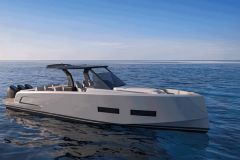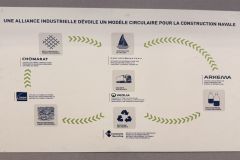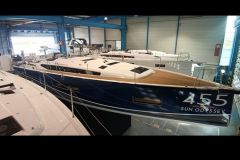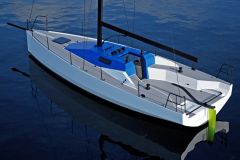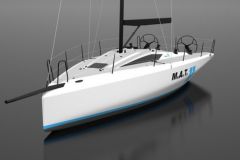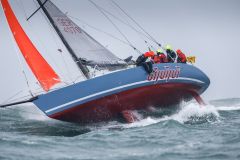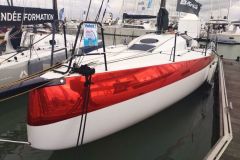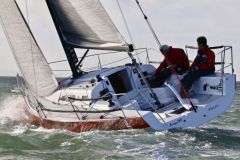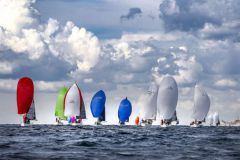What is the origin of the Django project 8S??
Éric Brulé: For some time we have wanted to remind you of the DNA racing off High Tide and there is nothing like Transquadra type races for that.
We are fortunate to have a "small" boat in our range that is certified in category A, the Django 7.70. We took advantage of this opportunity to modernize the boat and boost its performance. Thus we propose the Django 8S a offshore racing boat of size and budget intermediate between a Mini6.50 and a JPK or Sun Fast.

What is the regatta and navigation program of this bateau??
Sege Calvez: There are two programs for this boat. The initial project is to offer a sailboat for IRC regattas with a reduced crew such as the Transquadra, the Armen Race or the Fastnet. Indeed, there is no IRC off-shore regatta boat in this size and price range.
The other program of the 8S is that of an off-board sailboat that is easy and efficient with a reduced crew. For the moment, it is mainly this public that the boat has reached. Current customers wanted a Django without compromise and boosted for fun, we discovered a market.
So the Django 8S is an evolution of the 7.70??
Éric Brulé: We actually started from the hull of the Django 7.70 that we know well. The hull has proved its worth, it is our best-seller, sold more than 80 copies. We consulted the architect, runners and customers to establish the specifications.
We have completely redesigned the roof and invested in a new mould. Using a skirt, we have increased the hull length to 8.01 m, which has improved performance and maintained the essential A approval.
In fact, there is not much left of the 7.70, the hull is longer, the roof is new, it is a 2 m single hull bulb, the mast is carbon just like the dolphin boat.
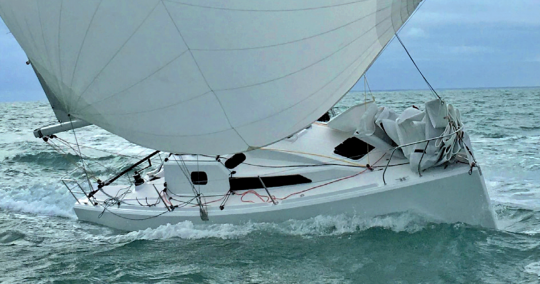
Currently, many construction sites are engaged in a fierce sporting and commercial battle on IRC races. What are your atouts??
Serge Calvez: Our advantage is the size and therefore the price. If we look at the new build market to participate in the Transquadra, the typical boat will cost 300,000 euros while with the Django 8S we will be at 160,000 euros all ready.
And then there are the steering sensations of a boat on the schedule. Most competitors cut the wings of their 10-metre cruisers to fit into a Transquadra. Thanks to the size of the Django, we are able to offer a boat that is really boosted for performance with an acceptable rating for this transatlantic race. Downwind, the Django8S must be able to compete with sailing yachts bigger, but less clothed.
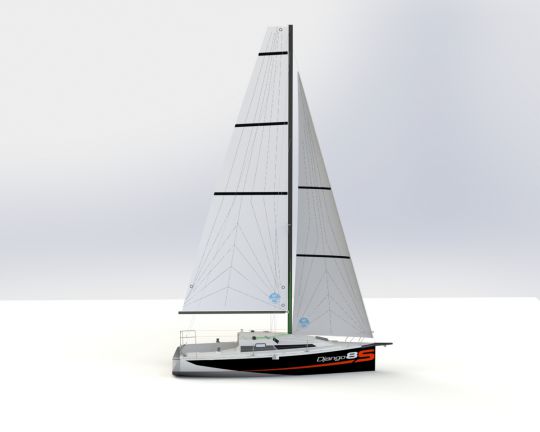
What IRC rating do you aim for with 8S??
Serge Calvez: With the carbon mast with double backstay, the mainsail with horn, the bulb keel and everything else that "the IRC doesn't like", we got a rating of 1.04. This is the upper acceptable limit for the Transquadra. We have done another simulation that will allow us to optimize the boat if customers ask us to do so.
How is the public reception going?
Éric Brulé: It's a success so far. We have already sold 3 boats, 2 of which are in the Mediterranean. The 8S works well, it's fun, and it offers a good volume for a reasonable price considering the performance.
At the shows we received many requests for information, whether for the race version or the out-of-gauge version. If the boat meets its public, it is expected that a one-design formula could emerge.

 /
/ 




